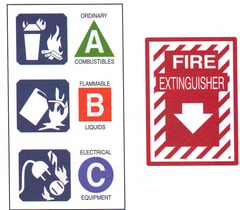MLT Study Guide #1
Unlock all answers in this set
Unlock answersquestion
Hematology
answer
the study of blood
question
Average adult has how much blood?
answer
About 5-6 liters (8-12 pints)
question
When blood is centrifuges what happens?
answer
It seperates into two distinct portions plasma & cells
question
About 45% is cellular or formed elements called?
answer
RBCs, WBCs, and platelets
question
RBCs
answer
Contain hemoglobin which carries oxygen to tissues
question
WBCs
answer
defend against foreign infectious agents (such as bacteria, viruses, fungi, etc.
question
Platelets (Plt)
answer
aid in the stoppage of bleeding
question
The remaining 55% is plasma which contains what?
answer
Straw/yellow fluid which is 90% water and 10% proteins, carbohydrates, vitamins, hormones, enzymes, lipids, salts, etc.
question
Transmission of microorganisms from person to person resulting in infection is called?
answer
Chain of infection
question
What is blood-borne pathogens?
answer
Organisms that can be transmitted through contact with human blood or other potentially infectious fluids or specimens that come from humans. HIV, HCV, and HBV are the viruses that are of major concern.
question
Universal Precautions
answer
(UP) a method of infection control in which all human blood and other body fluids containing visible blood are treated as if infectious.
question
Standard Precautions
answer
a set of comprehensive safety guidelines designed to protect patients and healthcare workers by requiring that all patients and all body fluids, body substances, organs, and unfixed tissues be regarded as potentially infectious. (Combines UP &BI)
question
BSI
answer
Body Substance Isolation
question
PPE
answer
Personal Protective Equipment should be worn when handling or collecting blood or body fluids contaminated with blood. (gloves, goggles, face shield, etc)
question
Work areas should be cleaned with what?
answer
10% solution of bleach (1:10 dilution- 1 part bleach mixed with 9 parts water) Active ingredient in household bleach is hypochlorite and a 10% solution equals 0.5% sodium hypochlorite.
question
What is the clear yellow colored portion called in a centrifuged blood specimen that was colllected in a vacuum tube without anticoagulant?
answer
Serum (it does not contain fibrinogen)
question
What is the clear yellow portion called in a blood specimen with anticoagulant?
answer
Plasma (it contains fibrinogen)
question
What is the correct order of draw?
answer
(1) Blood culture tubes (2) sodium citrate -coagulation tubes- LIGHT BLUE TOP (3) Serum tubes with or without clot activators- RED, GOLD, OR SPECKLED TOP (4) -eparin tubes with or without gel-GREEN TOP (5) EDTA tubes-LAVENDER TOP (6) Sodium fluoride (glycolytic inhibitor)-GRAY TOP
question
What is an anticoagulant?
answer
Substances that prevent the clotting (coagulation) of blood.
question
Oxalate, Citrate, and EDTA
answer
These work by removing calcium from the coagulation process.
question
Disodium or dipotassium (K3) salt of Ethylenediaminetetraacetic Acid or EDTA
answer
EDTA prevents coagulation by chelating (binding) ionized calcium in the blood into an insoluble salt which is a necessary component in the coagulation process.
question
EDTA
answer
It is the best anticoagulant to make blood smears/films for differentials because it causes less distortion of blood cells and less artifacts on the slide. Good for hematology procedures because it prevents platelet aggregation which yields more reliable platelet counts and makes them look more natural on prepared slides. (lavender top)
question
Blood smears/slides
answer
Must be made within 2-3 hours after collection from the patient or distortion and artifacts will increase with time.
question
Excessive EDTA
answer
causes RBCs to shrink causing crenation
question
Sodium Citrate
answer
the anticoagulant of choice for coagulation studies. It prevents coagulation by precipitating calcium in an unusable form. Tubes must be filled properly (full) because coagulation tests can be affected if the proper 1 part 0.109 (3.2%) sodium citrate to 9 parts whole blood is not met. Also good at maintaining the stability of factors V, VIII and platelet functions. (light blue top)
question
Heparin
answer
coagulation is prevented by enhancing antithrombin III which in turn neutralizes factor II (thrombin) & X. It is not a good choice for preparing differential sides since WBCs and Platelets will clump in addition to the stain being to blue. For special hematology test. (green top)
question
Isolation
answer
Purpose is to protect ones self from infections and to protect infection prone patients from getting infections.
question
Strict isolation
answer
gown, mask, and gloves
question
enteric & wound isolation
answer
gown and gloves
question
respiratory isolation
answer
mask
question
Protective (reverse) isolation
answer
designed to protect the patient: gown, mask, gloves, and sometimes shoe covers
question
Microscope
answer
Usually use low power objective (10x) to find the image. Then switch to a higher objective to focus on the image.
question
resolving power
answer
This is the ability of the microscope to produce fine detail of an image that is both clear and distortion free.
question
Spherical aberrations
answer
light waves out of synchronization as they are bent while passing through the same lenses-this will result in not being able to get the whole field of view to focus on the same plane
question
Chromatic aberrations
answer
colors of objects are not true
question
BOR
answer
Board of Registry (ASCP falls under this board)
question
ASCP
answer
American Society of Clinical Pathology
question
MLT
answer
Medical Laboratory Technician (2 year) requires C.E. to renew
question
MLS
answer
Medical Laboratory Scientist (4 Year) requires C.E. to renew
question
MT
answer
Medical Technologist (4 year) lifetime with no C.E. requirements
question
AMT
answer
American Medical Technologist
question
NCA
answer
National Credentialing Agency for Laboratory Personnel
question
ASCLS
answer
American Society for Clinical Laboratory Sciences
question
CAP
answer
College of American Pathologists Accredit laboratoris & proficiency testing
question
CLIA
answer
Clinical Laboratory Improvement Act government enacted regulations designed to improve laboratory testing
question
OSHA
answer
Occupations Safety & Health Association (government entity-worker safety)
question
CLSI
answer
Clinical and Laboratory Standards Institute (set standards for lab equipment, supplies and procedures)
question
JCAHO
answer
Joint Commision on Acceditation of Healthcare Organizations (Inspect and accredit hospitals, including the laboratory unless the labs are already CAP accredited)
question
Safety signs

answer
A is for ordinary materials-wood, paper, cloth, trash B is for gasoline, grease, oil, paint (flammable liquids) C is for live electrical equipment



